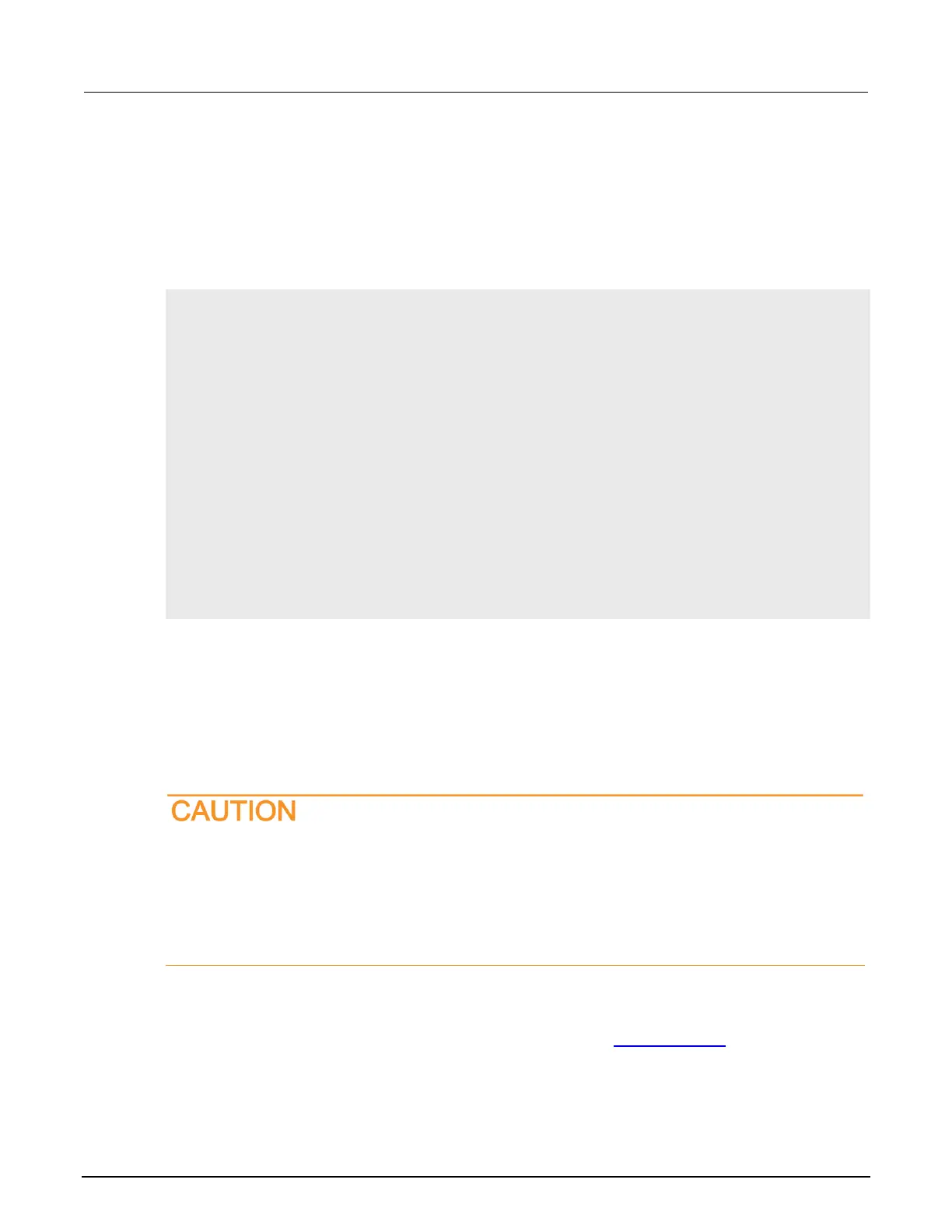Section 4: Sourcing and measuring Model 2601B-PULSE System SourceMeter Instrument Reference Manual
4-14 2601B-PULSE-901-01A April 2020
Contact check programming example
The following programming example illustrates the setup and command sequence for a typical
contact check measurement. These commands set the contact check speed to fast and the threshold
to 100 Ω. Then, a contact check measurement against the threshold is made. If it fails, a more
accurate contact check measurement is made, and the test is aborted. Otherwise, the output is
turned on, and the test continues.
-- Restore defaults.
smua.reset()
-- Set contact check speed to fast.
smua.contact.speed = smua.CONTACT_FAST
-- Set the contact check threshold to 100 ohms.
smua.contact.threshold = 100
-- Check contacts against threshold.
if not smua.contact.check() then
-- Set speed to slow.
smua.contact.speed = smua.CONTACT_SLOW
-- Get aggregate resistance readings.
rhi, rlo = smua.contact.r()
-- Return contact resistances to the host.
print(rhi, rlo)
-- Terminate execution.
exit()
end
-- Turn output on and continue.
smua.source.output = smua.OUTPUT_ON
Combining SMU outputs
The following information provides important considerations that need to be observed when
combining SMU outputs.
Use care when combining SMUs. Whenever SMUs are combined, it is best to use instruments with
identical current and voltage envelopes and ranges.
Carefully consider and configure the appropriate output-off state, source function, and
compliance limits before connecting the 2601B-PULSE to a device that can deliver energy (for
example, other voltage sources, batteries, capacitors, solar cells, or other 2601B-PULSE
instruments). Configure recommended instrument settings before making connections to the
device. Failure to consider the output-off state, source, and compliance limits may result in
damage to the instrument or to the device under test (DUT).
The following figure and table illustrate the pulse regions for each SMU when used in combination
with another SMU. The programmed current and voltage levels for both SMUs must fall within the
same pulse region. Refer to the 2601B-PULSE specifications on tek.com/keithley for the latest pulse
width and duty cycle information. Measurements are given priority over source and display operations,
so make sure that the measurement time does not exceed the allowable pulse width and duty cycle in
a particular pulse region.

